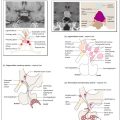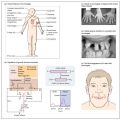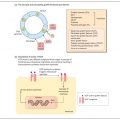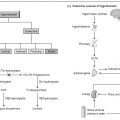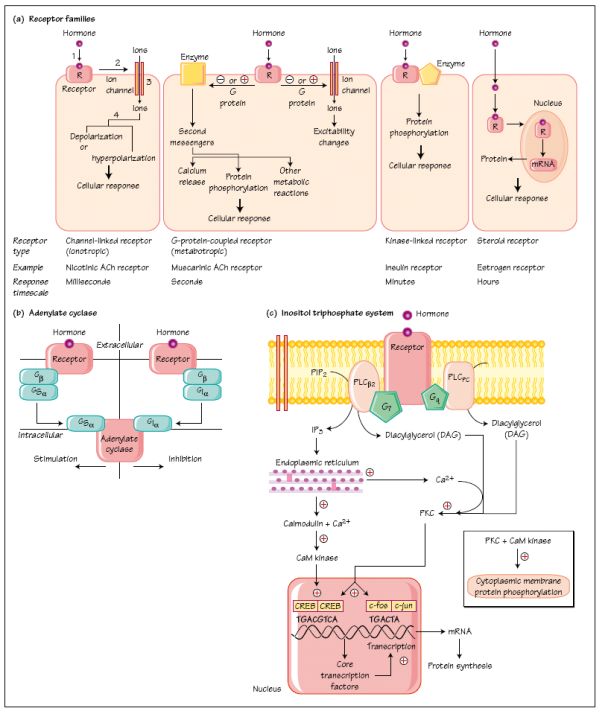
Acromegaly is usually caused by anterior pituitary gland tumours which secrete growth hormone. In 30 to 40% of cases, the tumour is thought to arise due to a somatic mutation affecting transmembrane signalling mechanisms. The stimulatory G-protein Gs is involved in signal transduction at the growth hormone releasing hormone receptor. Mutation of the α-subunit of Gs into the gsp oncogene prolongs the activation phase of the G-protein system, allowing unrestrained hormone synthesis and cell division. The distinctive clinical features of acromegaly and development of the pituitary tumour follow.
Hormones interact with target cells through a primary interaction with receptors which recognize the hormones selectively. There are several different receptor systems, which vary in mechanism and timing (Fig. 3a). Charged ions such as peptides and neurotransmitters bind to receptors on the cell membrane. This causes a conformational change in other membrane proteins, which activate enzymes inside the cell, resulting in, for example, the synthesis of ‘second messengers’, which activate phosphorylating enzymes.
Uncharged molecules, such as the steroid hormones diffuse into the cell and bind to intracellular receptors (see Chapter 4). The hormone-receptor complex binds to specific hormone response elements (HRE) on the DNA; the result is that RNA and protein synthesis are altered. The cell will react faster to peptide hormones and neurotransmitters than it will to steroid hormones, which work through relatively slow changes in protein synthesis.Nevertheless, membrane receptors have been discovered for steroid hormones, although the significance of these is not yet clear.
Stay updated, free articles. Join our Telegram channel

Full access? Get Clinical Tree


